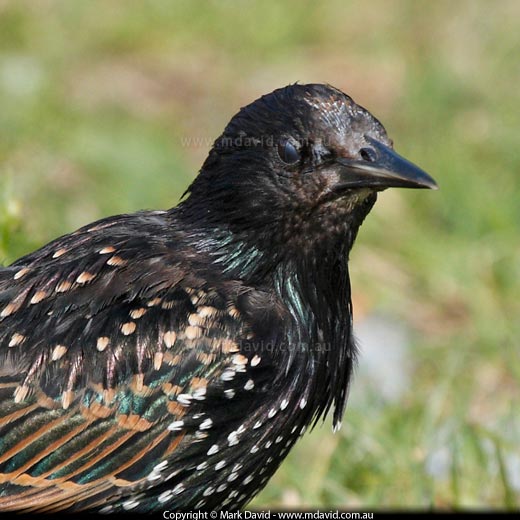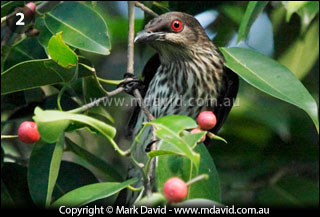
For most of the Australian population, when you talk about a starling you’re thinking of the Common Starling. But there’s another type, seen in the north-eastern tropics, which deserves a mention — the Metallic Starling.

Common Starling
The Common Starling (Sturnus vulgaris) didn’t always live in Australia. It was introduced to the country in the 1850s, mainly to control insect pests. Like the Indian Myna and Cane Toad, this species has become something of a pest itself.
How much of a pest?
That depends on where, or who you are. If you’re sitting in the middle of a fruit crop that’s been decimated by flocks of Common Starlings then you’re likely to rank them as serious. Or if your house burned down because starlings clogged up the electrical wiring inside your roof with nests then you’d probably have a dim view of them too. These birds also bring mites into buildings that way, and when the birds leave after they’ve finished breeding, those parasites then spread through the house, causing bites and irritation to the humans inside.


1: Common Starling 2: The prominent red eyes are a feature of the Metallic Starling
Common Starlings living in the bush will also aggressively take over nesting spots that would have been used by indigenous birds and have been claimed to build their nests right over the top of other nests.
However due to their vast numbers these birds do eat a lot of insects and so that might be helping to control some types of insect pests.
Metallic Starling
Aplonis metallica
Now we get to this other starling in Australia. Your best chances of encountering these guys will be in north-eastern Queensland, although sometimes they’ve been seen wandering further south. Sit next to a tree full of them and don’t expect to manage much conversation. The noise they make can be deafening. Towards sunset giant flocks of these birds will assemble in roosting trees in towns like Port Douglas. I reckon the noise they make is similar to the screeching, chattering noise of Rainbow Lorikeets.
Not only do Metallic Starlings roost together, but they nest together too, often taking over a large tree in a rainforest.
They share the Common Starlings’ love of fruit, except they don’t share the love of insects. I guess if I was an insect I wouldn’t feel too confident walking through a flock of them but the truth is that insects only form a minor part of their diet.
References
Reader’s Digest Complete Book of Australian Birds, 1979
Reader’s Digest Services Pty Ltd
Neville W. Cayley
What Bird is That?
Revised edition 1987
Angus & Robertson Publishers, Sydney






